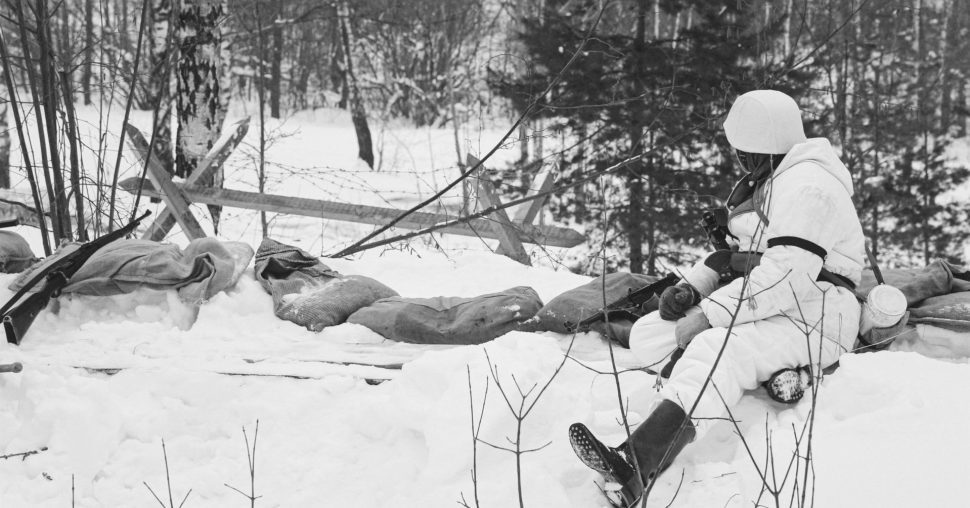Let’s start with an image we can all relate to: You’re standing at the front door, about to head out. The thermometer is flirting with single digits, there’s a biting wind howling through the trees, and any exposed skin feels like it just took a dip in liquid nitrogen. Maybe you’ve got work to do outside, livestock to tend, or you’re just trying to keep the driveway clear so you can make that grocery run. Whatever the reason, when the mercury plummets, you need a plan—especially if you’re going to be out there for more than a quick dash to the mailbox.
Most folks can handle a few minutes in the cold. But what if you end up stranded somewhere longer than expected, or the power goes out, or your truck breaks down on a remote stretch of highway? Below-freezing temperatures aren’t something you can just “tough out” if you’re unprepared. Hypothermia and frostbite don’t care how tough you are or how many squats you do at the gym. If you’re not dressed and equipped correctly, things can go south quickly.
In this article, we’re going to dig into all the details—layering your clothes so that you stay warm but don’t sweat yourself into an early grave, keeping your body and gear dry, preparing for a few hours or even a few days in the cold, and figuring out what you can do if you only have a moment’s notice (or no warning at all). We’ll also talk about budgets, because not everyone’s got the bank account for the latest arctic expedition gear. Some can afford to gear up like they’re heading out on a polar trek, while others might have to make do with hand-me-downs and thrift store finds.
Whether you’re trekking through your back forty in the Ozarks, braving winter storms in the Great Plains, or just living where the power grid occasionally decides to give out, let’s make sure you’ve got the know-how to handle the cold without turning into a popsicle.
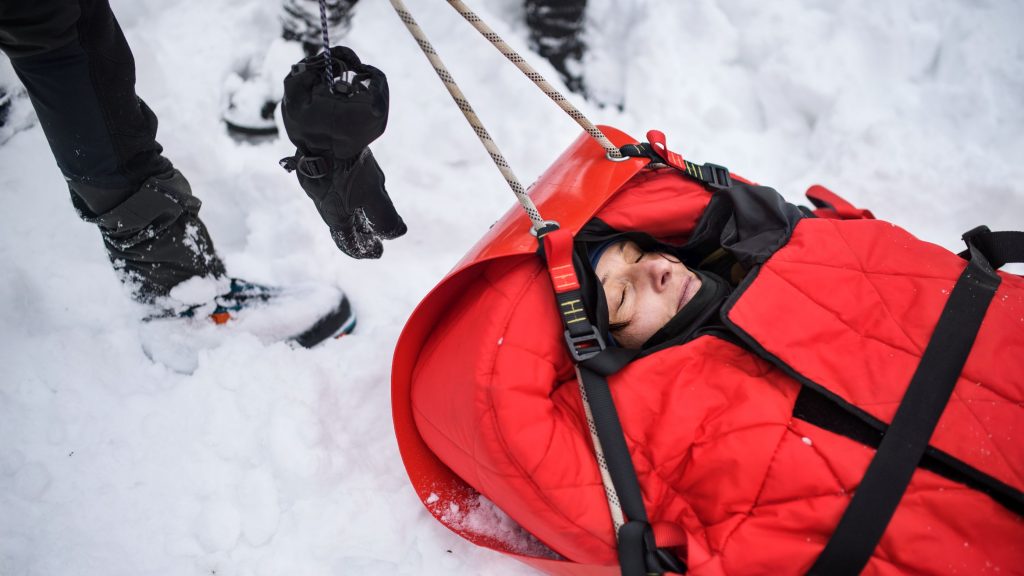
A Quick Reality Check: Why Staying Warm and Dry Matters
Before we talk specifics, let’s hammer home one point: when it’s below freezing, moisture is your enemy. Even if it’s dry snow and the forecast calls for that magical “powder,” sweat can still soak your clothes from the inside out, setting you up for a rapid drop in body temperature the moment you stop moving.
Your body is like a furnace that runs on calories, water, and oxygen. The colder it gets, the more fuel you burn to keep that internal furnace roaring. If you’re wet, you lose heat a lot faster. That’s how hypothermia sneaks up on people who “felt fine” just an hour ago. It’s not just about throwing on the thickest coat you can find; it’s about managing your layers and regulating your temperature so you don’t sweat like a marathon runner one minute and freeze stiff the next.
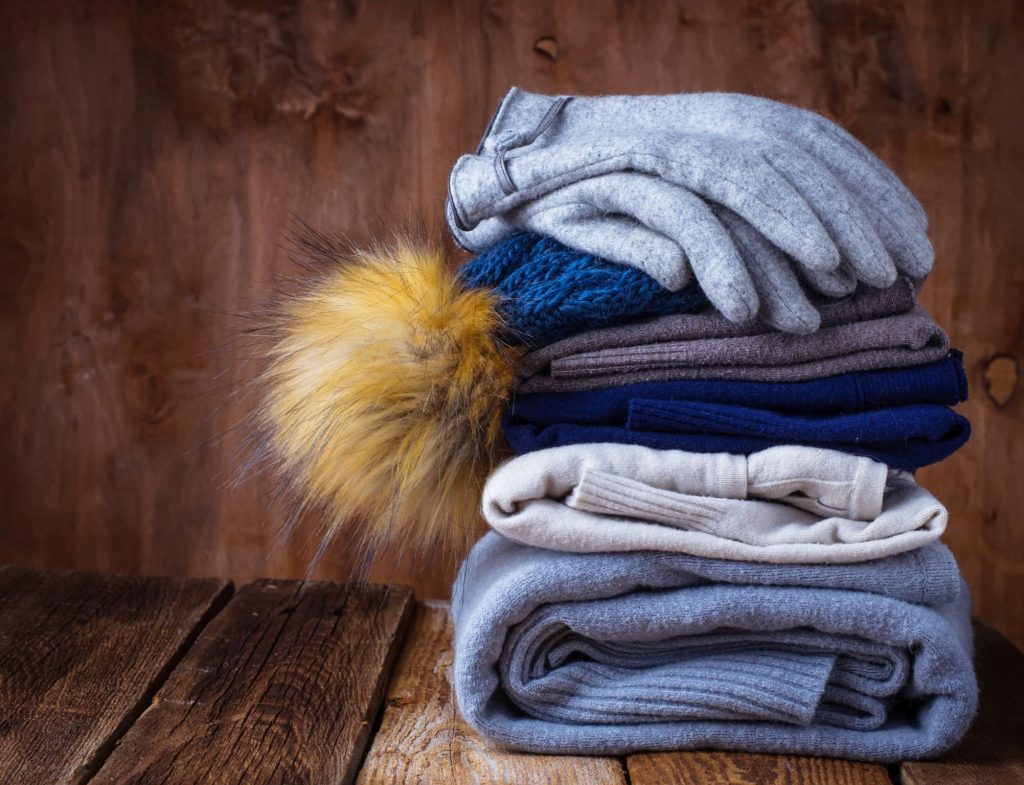
Layering for Success (and Survival)
We’ve all met that guy who shrugs off the cold until his lips are blue, or the gal who thinks a single massive parka is the end-all solution. Truth is, layering—wearing multiple, lighter layers that each serve a specific purpose—is the key to warmth and dryness. That goes for short trips in the cold and for multi-day excursions or potential survival situations.
1. Base Layer: Wicking Away Moisture
Your base layer is your second skin—tops and bottoms that sit closest to your body. Their main job is to pull sweat away from your skin, preventing that clammy feeling that leads to chills. Wool and synthetic materials (like polyester blends) are both good choices here. Wool (especially merino) is great because it insulates even when it’s wet, and it doesn’t stink like some synthetics might after a few days. If you’re on a tight budget, you can often find secondhand wool sweaters or thermal tops at thrift stores. Avoid cotton like the plague, though—once cotton is wet, it’s like wearing a sponge.
2. Middle Layer: Insulation
This is your warmth layer, trapping the heat your body generates. Fleece, down, and synthetic insulation all shine in this department. Down is warm and packable but loses much of its insulation value if it gets soaked. Synthetic fleece or fill (like PrimaLoft) can handle moisture better, but might be bulkier. For folks who have a bit of budget, a quality down jacket or vest is hard to beat if you keep it dry. If you’re short on funds, an old wool sweater stacked on top of your base layer can do wonders. Just be sure not to overdo it; if you’re headed outside to chop wood, you might break a sweat and soak those layers from the inside.
3. Outer Layer: Blocking Wind and Water
Cold wind can pierce through inadequate clothing and steal your heat in no time. A good outer shell should stop the wind and keep out precipitation, whether it’s snow, sleet, or rain. For serious winter conditions, a waterproof-breathable jacket with sealed seams is best, but these can get pricey. If your budget is low, even a water-resistant windbreaker or an old military surplus parka can help. The important part is that it blocks wind and doesn’t soak through at the first sign of snow.
4. Extremities: Hands, Feet, and Head
Your fingers, toes, ears, and nose are often the first parts to feel the bite of cold. Don’t neglect them:
- Hats or Beanies: Aim for wool or fleece. Cover your ears and consider a facemask or balaclava in truly frigid conditions.
- Gloves or Mittens: Mittens are warmer than gloves because your fingers share warmth, but you lose some dexterity. Layering glove liners under mittens can offer a good balance if you need to remove mittens for a delicate task.
- Footwear: Waterproof boots with insulation are your friend. Wool or synthetic socks (again, not cotton) make a huge difference. Double up on socks if you have room in your boots, but don’t cut off circulation.
- Neck and Face: A scarf, neck gaiter, or even a bandana can protect your neck and lower face from biting wind.
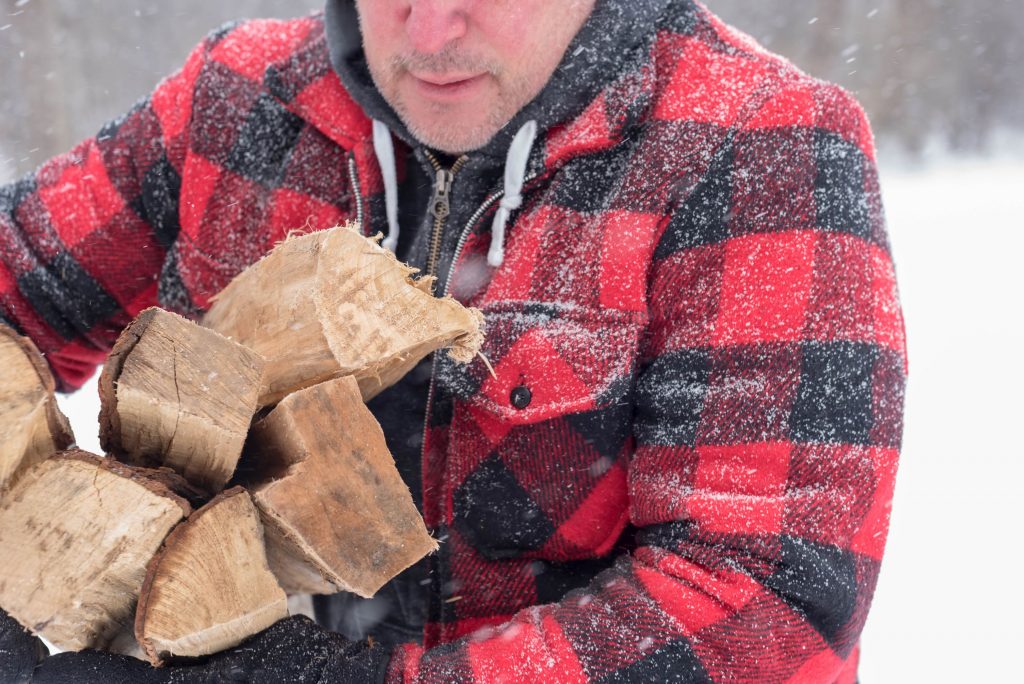
Staying on the Move: Managing Sweat and Activity
We all know that guy—he’s out clearing snow or hauling firewood in a heavy coat, works up a sweat, then stops to catch his breath and suddenly starts shaking like a leaf in the wind. That’s because the sweat trapped in his clothing is now cooling off, pulling heat away from his body.
The trick is to adjust your layers depending on your activity level. If you’re going to be chopping wood or hiking up a ridge, you might start out wearing your outer shell. But a few minutes in, if you’re sweating up a storm, it’s time to peel off a layer or two. It might feel counterintuitive to expose yourself to cold air, but it’s better to regulate your temperature than to soak your layers with sweat. Once you stop moving, you can throw the layers back on to trap in that body heat.
Also, remember your body needs more calories when it’s cold. You burn energy faster, and your muscles need fuel to keep you moving and generating heat. Keep some high-calorie, easy-to-eat snacks on hand: nuts, jerky, chocolate, energy bars—whatever you prefer. If you’re out for hours at a time, don’t forget to hydrate. It’s easy to skip water when it’s freezing, but dehydration is still a risk even in cold weather. Warm liquids can help keep your core temperature up and your morale high.
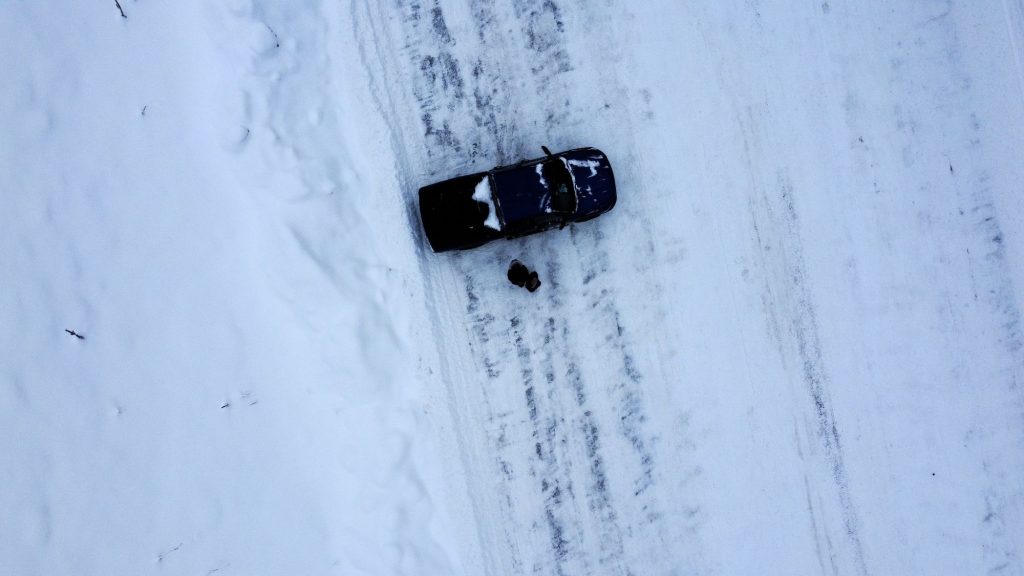
If You’re Stranded: Short-Term Survival in the Cold
Picture yourself driving home from a buddy’s place late at night. Snow starts falling faster than predicted, the road ices over, and next thing you know, you’re in a ditch miles from the nearest gas station. Or maybe the power grid decided to tap out in the middle of a blizzard, and you have no choice but to hunker down where you are.
If you only have to endure the cold for a few hours—maybe you expect a tow truck or rescue soon—then your primary concerns are staying warm, staying dry, and signaling for help.
Create or Find Shelter: If you’re in your vehicle, stay inside unless there’s a real reason to leave (like an imminent threat). Cars can block wind pretty well, which is half the battle in preserving heat. If you must exit the car because of some danger, look for a structure, a natural windbreak, or use a tarp or even branches to form a makeshift shelter. Anything that cuts down the wind is worth the effort.
Insulate Yourself from the Ground: The earth will sap heat from your body if you sit or lie directly on it. Pile up floor mats, blankets, spare clothes—whatever you can find—between you and the cold surface.
Stay Visible: If you’re stranded by the road, keep your hazards on (unless they kill your battery in no time). Brightly colored cloth, a reflective vest, or even your car’s hood propped open can alert passersby that you need help. In a power-outage scenario at home, communicate with neighbors or use your phone (if it’s still charged) to let folks know your status.
Use Heat Wisely: If you’ve got the car engine running to produce heat, do it in short spurts—maybe 10 or 15 minutes every hour. Check that the exhaust pipe isn’t clogged with snow or debris. Carbon monoxide is a silent killer. And if you’re lucky enough to have a candle (in a jar or tin can, for safety), it can produce a surprising amount of heat in a small, enclosed space.
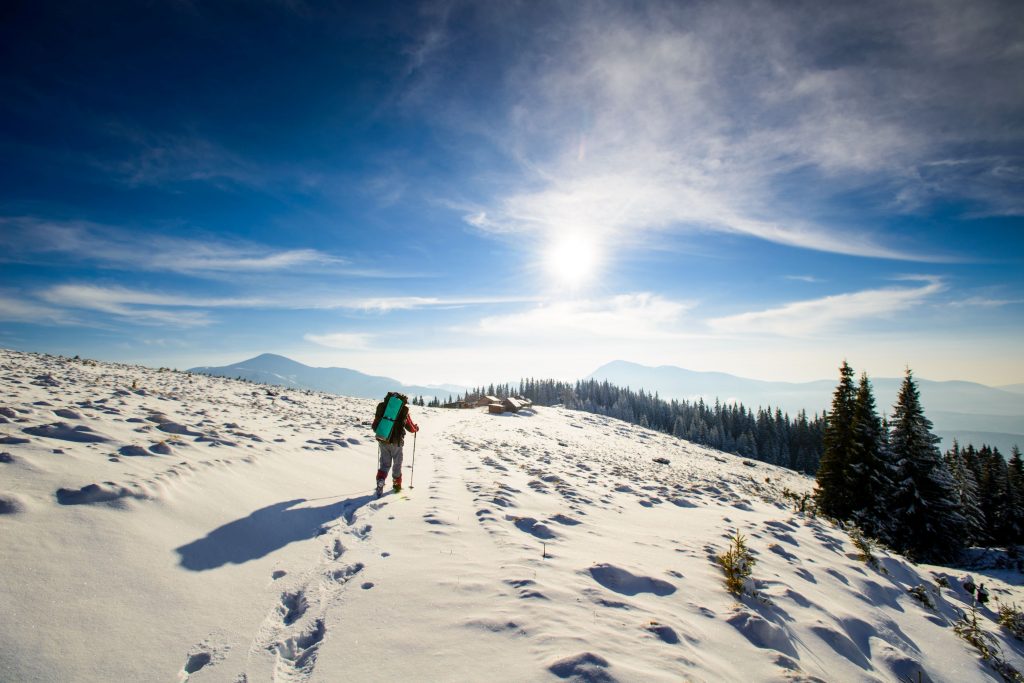
Going the Distance: Hours of Labor in Sub-Freezing Temperatures
Sometimes, you don’t have the luxury of taking breaks in a heated cabin. Maybe you have livestock that needs tending, fences to mend, or a job that requires outdoor work—like a utility lineman or a trucker unloading cargo in the bitter cold. If you have to be active outside for hours, your layering strategy and sweat management become even more critical.
Pace Yourself: Find a balance between working efficiently and not pushing your body into a sweaty mess. Plan short breaks every 30 minutes to an hour, even if it’s just to stand behind some windbreak, strip off a wet outer layer, and rotate your gear.
Have a Dry Set of Clothes Ready: If you have the means, keep at least one dry shirt, pair of socks, and possibly a fresh pair of gloves in a pack or vehicle. Swapping out damp gear can make a huge difference to your comfort and safety.
Fuel and Hydration: Working in the cold can burn a surprising amount of calories. Keep snacks on hand and drink water or warm liquids. If you start feeling sluggish, a bit of sugar or protein can perk you up. Just be mindful of coffee or caffeine intake; it might help with alertness, but it also increases your heart rate, which can influence how your body handles the cold. Moderation is key.
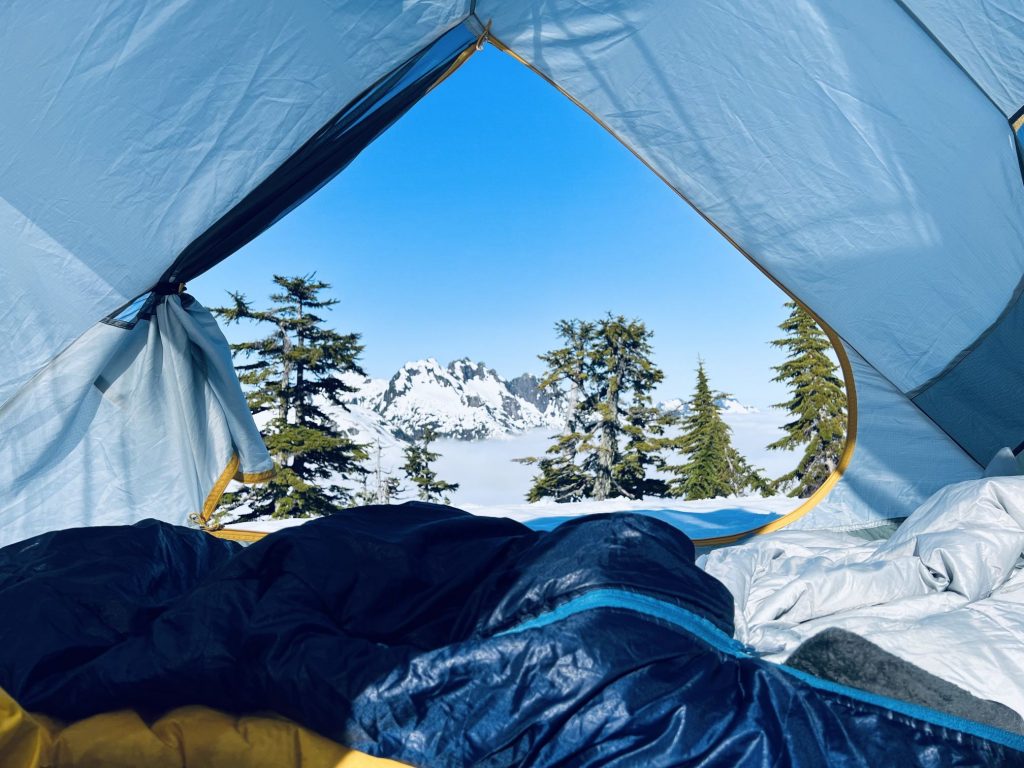
Hunkering Down: Days in the Cold
Maybe you’re on a multi-day hunting trip. Or you’re living off-grid and a cold snap rolled in with a vengeance. Or the power’s been out for days, and the roads are impassable. In a prolonged scenario, you need a more strategic approach.
Shelter Matters More Than Ever: If you can, plan your shelter to maximize heat retention. That might mean a properly insulated cabin, a winter tent with a wood stove, or a makeshift lean-to with a thick wall of pine boughs. If you’re in a house without power, seal off one or two rooms so they stay as warm as possible. Hang blankets over doors, keep curtains closed to trap heat, and gather everyone (and pets) in that space for shared warmth.
Clothing Maintenance: Over multiple days, your clothes can get damp from sweat or melting snow. Rotate items in front of a fire (safely) or in any warm space you can manage. If you’re truly off-grid, consider using the heat from cooking stoves or fireplaces to dry out socks and gloves. Damp clothes are a one-way ticket to misery.
Food and Water: You need high-calorie meals that are easy to prepare. Soups, stews, and hearty fare that keep you warm from the inside out. If you’re relying on melted snow for water, remember to bring it to a rolling boil or at least use a reliable purification method if you’re uncertain about contaminants. Also, never eat snow directly as a way to hydrate—it’ll lower your core temperature. Always melt and warm it if you can.
Keeping Morale Up: Don’t discount the mental toll of day after day in the cold. Boredom, stress, and cabin fever can set in. If you’re out camping or homesteading, consider daily tasks like gathering firewood, checking traps, or simple chores that keep you active and your mind off the cold. If you’re stuck indoors without power, break out board games, books, or any form of low-tech entertainment.
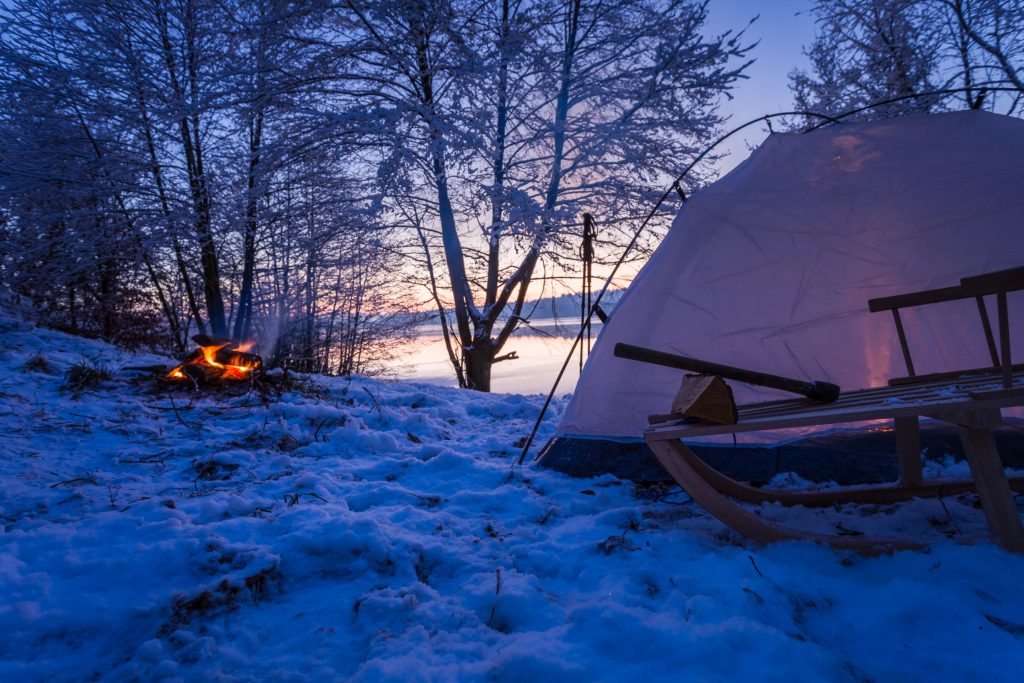
Sleeping in Sub-Freezing Temperatures
It’s one thing to stay warm during the day when you can move around to generate heat. It’s another thing entirely when you’re lying still at night. Proper bedding or sleeping bags rated for cold weather are worth their weight in gold. If you can’t afford a fancy cold-weather bag, layer up with multiple blankets and an inexpensive sleeping bag.
Ground Insulation: Use sleeping pads, foam mats, or even piles of leaves, pine needles, or spare clothing to insulate from the cold ground. If you’re in a cabin or house with no heat, put layers of cardboard or blankets on the floor before you lay your bedding down.
Wear Dry Clothing to Sleep: Change into fresh, dry socks and base layers if possible. Even slightly damp clothing can cool you quickly once you stop moving.
Pre-Warm Your Sleeping Bag: If you have the ability to heat water, fill a sturdy water bottle and place it in your sleeping bag for a few minutes before climbing in. Just make sure it’s sealed well so you don’t end up with a soggy, and now dangerously cold, bed.
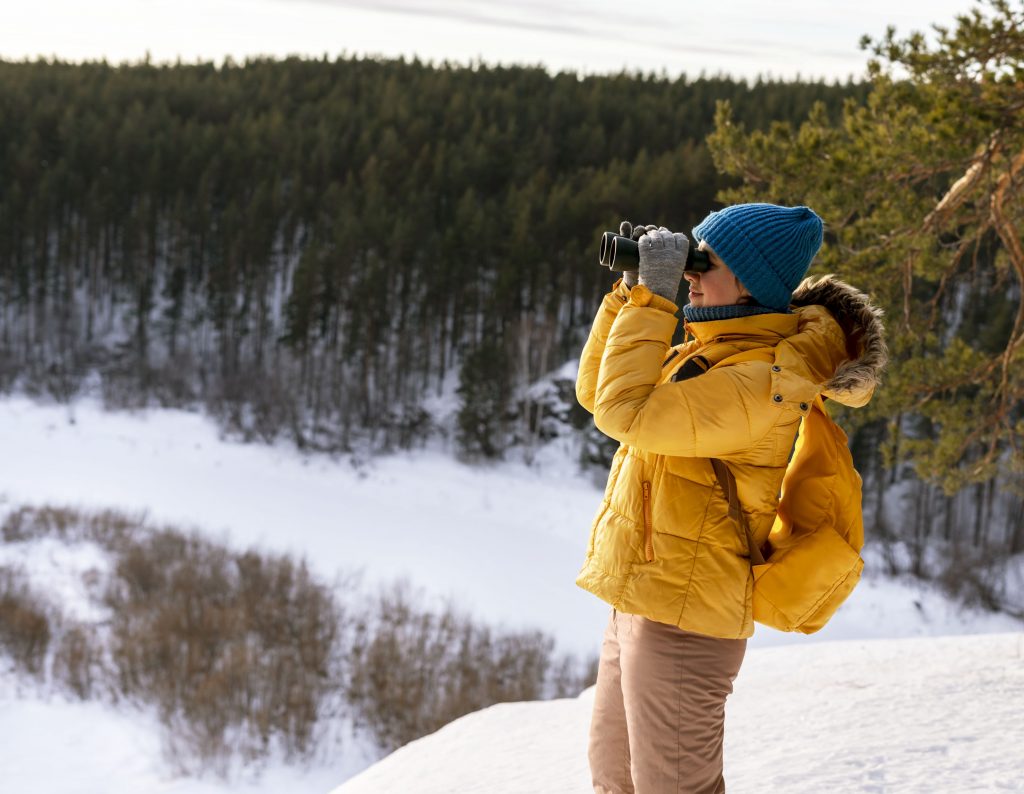
Budget Considerations: High-End Gear vs. Scraping By
We don’t all have a few thousand dollars to drop on the latest arctic-rated jacket or goose-down sleeping bag. Some folks might be able to plan for a trip weeks in advance, while others wake up to a news broadcast saying the blizzard of the century is rolling in tomorrow. Here’s how to handle both ends of the spectrum:
1. When Money and Time Aren’t a Big Obstacle
You can invest in merino wool base layers, top-notch synthetic or down insulation, a waterproof-breathable shell, and a real winter-rated sleeping bag. Store plenty of freeze-dried meals, high-tech stoves, and medical supplies. You might even set up a generator, solar array, or wind turbine for backup power. If this is your situation, great—just don’t get complacent. Gear is only as good as your knowledge of how to use it effectively.
2. When You Have Little Warning and a Tight Budget
Check thrift stores for wool coats, sweaters, and blankets. A ragged old wool sweater can keep you warmer than a thin, expensive designer jacket that doesn’t insulate well. Use plastic grocery bags or old bread bags between socks to help keep your feet dry in a pinch. Layer multiple cheaper items to achieve the insulation of a single expensive jacket. You can also repurpose household items—like bubble wrap or cardboard—for short-term insulation. And if you’ve got absolutely no time, rummage through your closet for anything made of wool or synthetic fleece and pile it on.
Dealing with Sweat and Moisture on a Shoestring
If you’re not able to buy multiple base layers or pricey jackets, pay attention to how you sweat. Even a small selection of cheaper clothes can do the trick if you use them right. Strip off layers when you start to feel overly warm, and rotate items before they get soaked. Lay out damp clothes to dry whenever you can find a source of heat or some direct sunlight. Even in cold temps, a sunny spot and a little breeze can help evaporate moisture.
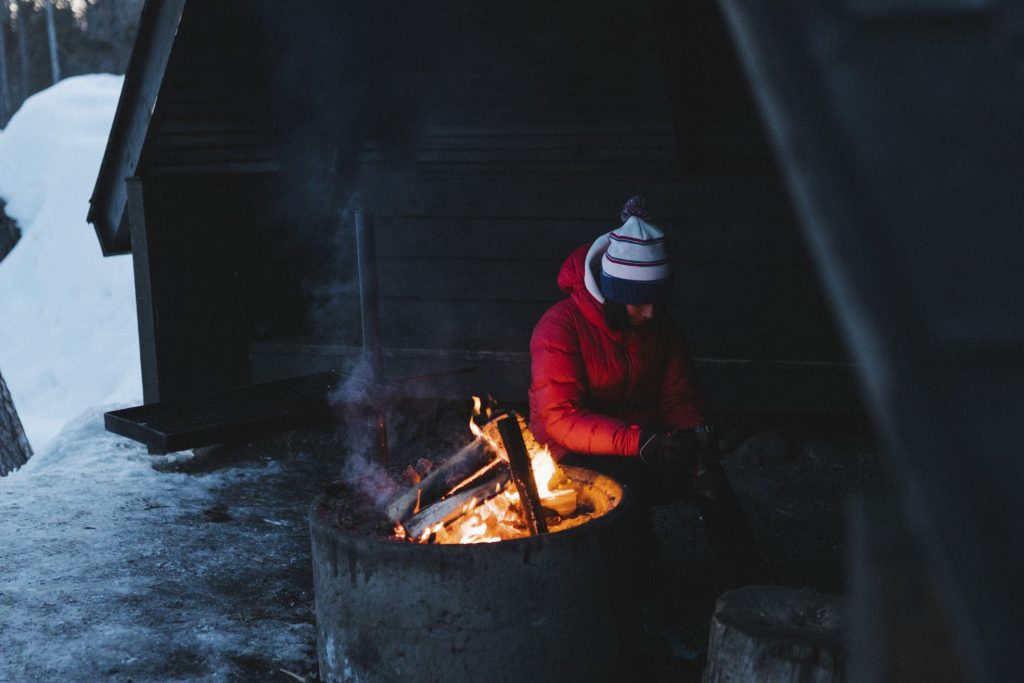
What to Do if You’re Stuck Overnight Outdoors
Imagine you’re out for an extended hike, or maybe you had to work late on the ranch, and you got caught in a storm. The roads are too bad to make it home safely, and it’s starting to get dark. It happens more often than you might think. People get stuck on highways all the time when massive accidents cause gridlock, or they lose their way on a remote country road.
In these scenarios, finding or making a decent shelter is job number one. If you’re away from buildings, consider digging a snow cave if there’s enough accumulation. Snow is an excellent insulator. Just be cautious about ventilation. If you can’t dig a cave, find a natural windbreak—maybe a dense stand of trees or a rock overhang. Use branches, tarps, or any materials to block the wind and keep snowfall off you.
Next, if you have the means to start a fire, do it. Fire not only provides warmth and a place to dry your gloves or socks, but the light and smoke also help signal rescuers. Just be sure you’re being safe with the flames and not risking a forest fire. Stay awake in shifts if you can—falling asleep in front of an open flame can lead to unintended consequences.
And finally, keep your spirits up. Feeling hopeless or panicked drains you mentally and physically. Focus on small, manageable tasks: gather more fuel, reorganize your shelter, do some light exercises (like squats or lunges) to generate heat—but don’t overdo it and start sweating heavily. Every little bit helps stave off the cold and keeps you alert.

The Mental Game of Cold Survival
A lot of people underestimate the psychological impact of severe cold. Cabin fever can set in if you’re hunkered down for days in a freezing house. Boredom, irritability, and stress can become real threats to your well-being—and ironically, can lead to poor decision-making that makes your physical situation worse.
If you’re with family or friends, divide tasks and keep everyone involved. One person can handle water collection or melting snow, another can manage the fire or stove, and someone else can watch for news updates or handle communications (if any). When everyone feels like they have a role to play, morale usually stays higher.
If you’re alone, staying mentally engaged is crucial. Plan your day in segments—gather resources, check your gear, do some quick exercises, then rest. Keep your mind occupied with reading (if you have books on hand), listening to a battery-powered radio, or even just daydreaming about better weather. The key is to not let gloom and doom creep in and paralyze you.
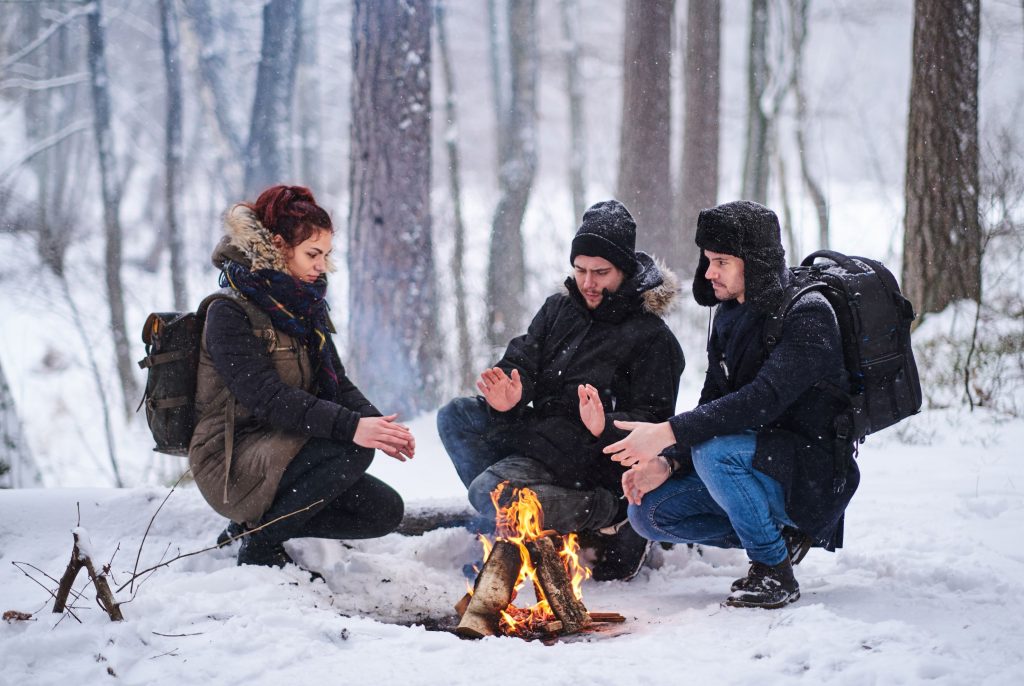
From Quick Trips to Extended Stays: A Summary
Below-freezing temps can be a minor inconvenience if you’re outside for just a few minutes. But it can turn into a life-threatening situation if you’re caught unprepared for a longer stretch, whether that’s a few hours on the roadside or multiple days in a remote cabin. The core principles remain the same no matter the duration:
- Dress in Layers: Focus on wool or synthetic base layers, insulating mid-layers, and windproof/waterproof outer layers.
- Stay Dry: Manage sweat, avoid cotton, and change damp clothes as soon as you can. Moisture is your biggest enemy.
- Generate and Preserve Heat: Whether it’s your own body heat through movement or an external heat source like a fire, make sure you have a plan to stay warm. Insulate yourself from the wind and cold surfaces.
- Keep an Eye on Nutrition and Hydration: Cold weather demands more calories, and dehydration can happen even when you’re not sweating as much as in summer.
- Think Ahead: If you have the money and time, invest in quality gear and test it before you actually need it. If you don’t, get creative with thrift finds or household materials.
- Maintain Morale and Communication: In extended scenarios, mental toughness is half the battle. Keep in touch with others if possible, and stay busy with tasks that support your survival.
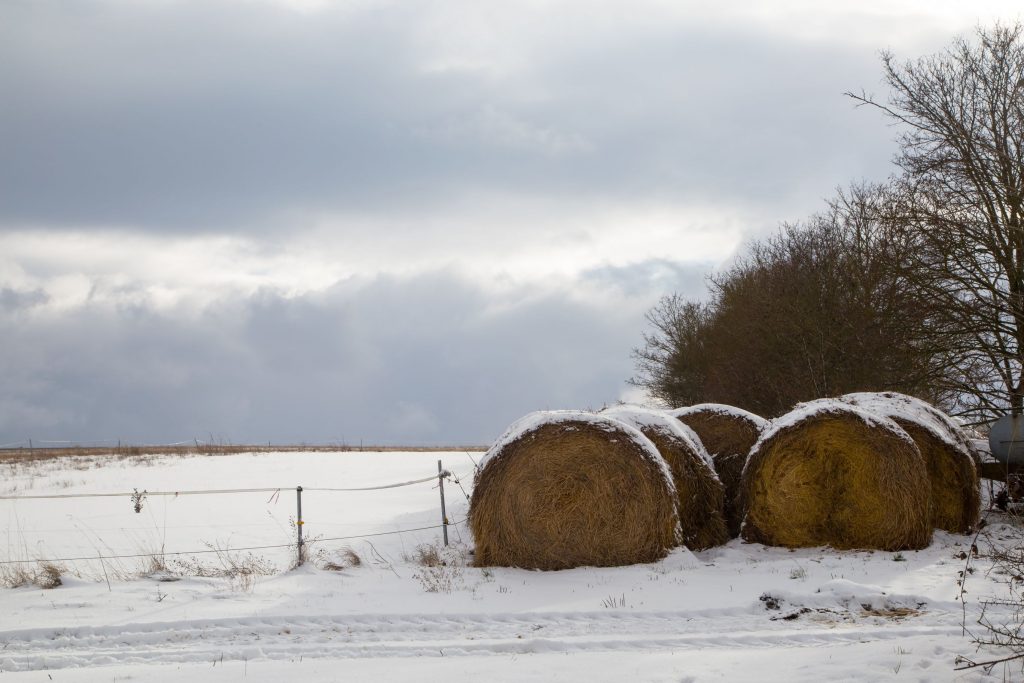
Final Thoughts
We can’t promise your significant other won’t roll their eyes when you start stockpiling wool blankets or layering up like some sort of artic explorer. But if a cold snap hits tomorrow or your truck decides to die on a backcountry road, you’ll be mighty glad you took the time (and maybe a little extra cash) to get yourself properly equipped.
At the end of the day, dressing for sub-freezing temps and staying dry is more than just comfort—it’s about preserving life and limb. Even if you’re only stepping out for fifteen minutes, a simple miscalculation can land you in a dangerous spot. So think of the layers, plan for the worst, and appreciate the best. Because when everyone else is complaining about the cold, you’ll be the one calmly sipping your hot coffee, your toes warm in wool socks, and your breath a sign that your furnace—body, mind, and spirit—is still running strong.
Stay safe, stay warm, and remember: a little preparation can mean the difference between a cold inconvenience and a dire emergency. Stay prepared, and the next time the thermometer plunges, you’ll be the one stepping outside with confidence, not cursing the frosty wind.
